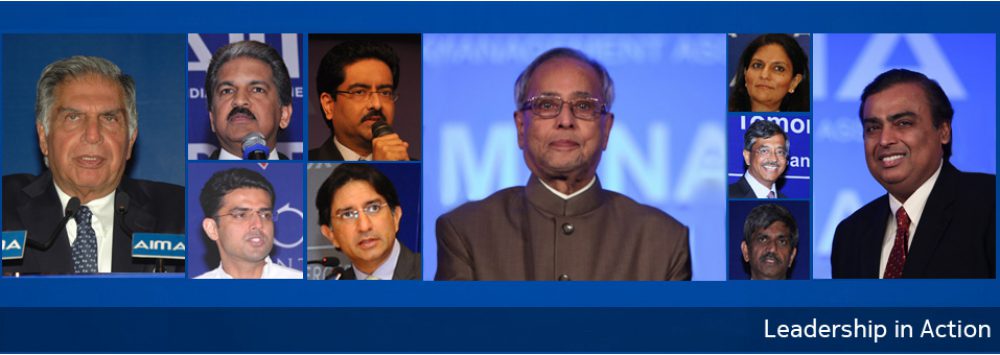 In a recent survey of HR professionals by All India Management Association (AIMA), 70 per cent of the respondents said that they expected annual performance appraisals to cause employee attrition. Also, the survey revealed that neither the appraiser nor the subject were completely happy with the appraisal process. Still, there is no stopping the annual performance appraisals.
In a recent survey of HR professionals by All India Management Association (AIMA), 70 per cent of the respondents said that they expected annual performance appraisals to cause employee attrition. Also, the survey revealed that neither the appraiser nor the subject were completely happy with the appraisal process. Still, there is no stopping the annual performance appraisals.
The appraisal season is almost over and employees have been handed out their rewards and retributions. In a few weeks, the emotions will subside, new equations among colleagues will become routine and teams will settle down after promotions, transfers, exits and replacements. However, the HR managers and department heads will have a torrid time till then. They will have to play confidants and counsellors, even shrinks, to the unhappy majority. Also, the appraisal outcomes will add fresh fuel to the debate about the utility of annual appraisals and the legitimacy of the appraisal processes.
The critiques of annual performance appraisals would argue that once-a-year judgement on employee worth in a rapidly changing world is inefficient, as it holds up confirmation or correction of organization goals and employee performance. The advocates of annual appraisals would argue that accounts and budgets are annual and so must be payhike-linked appraisals.
The critics would argue that playing god is tough on managers and the majority of them end up acting either timid or tyrannical. They would also say that appraisals are inherently unfair because the budgets and quotas for payhikes and promotions are fixed in advance. Also, pitting colleagues against each other in appraisal sweepstakes impedes collaboration. However, the advocates would argue that resources are always scarce and rewards must be rare to have any motivational value.
Then there would be the near-religious standoff on role of measuring performance. The critics have Albert Einstein on their side, who said, “Not everything that counts can be counted; and not everything that can be counted counts.” The advocates would spout Peter Drucker, who said, “If you can’t measure it, you can’t manage it.”
The debate may be mostly academic, the rancour in the post-appraisal atmosphere can do real harm to the organization. It can damage productivity, collaboration and, hence, growth. Therefore, it is important to tackle the post-appraisal meltdown swiftly. Better still, make the appraisals meltdown proof.
The surprise can be taken out of the judgement day by frequent feedback to the employee. Ultimately, it is all about expectation management. In this age of hyper communication, employees expect instant feedback. They want to know if their work was appreciated, will they stagnate or grow, whether they should stay or go. Often, the most skilled ones tend to be the most impatient. They are the ones most likely to jump ship if they feel shortchanged or betrayed. Keeping their performance and expectations aligned with business realities is the key to prevent post-appraisal leakage of talent.
Continuous evaluation and feedback also help the organization recalibrate its human resource, or its business targets, depending on where it has the flexibility. Most importantly, it helps build and sustain mutual trust between the employees and the firm, which is critical to business success.
The shock of annual appraisals can make employees cynical. Ultimately, employees measure the ethics of their firm by its appraisal practices. There have been instances where firms have suffered huge losses because their employees did not report problems that were directly not their responsibility.
The appraisal acrimony can also be minimized by making it a negotiated process. Self-appraisal followed by boss’ appraisal is the greatest source of mutual distrust. Each employee believes that he or she is extremely good at the job, even smarter than the next person. In 2007, a BusinessWeek survey in America found that more than 80 per cent of the middle managers believed that they were among the top 10 per cent performers in their company and 97 per cent of the executives believed they were the best 10 per cent of the lot. Self-appraisal indulges employees’ delusion and boss’ appraisal masks organization’s limitations. The way to prevent cynicism is that the boss and the employee do the performance assessment jointly and arrive at negotiated agreement.
Another major source of appraisal shock is the contradiction between the stated nature of performance appraisal and its actual nature. While performance appraisals are said to be about past performances, the payhikes and promotions are actually based on the firm’s future expectations from the employee.
Nevertheless, under any kind of appraisal regime, there will be more losers than winners. Managing the losers is vital to the organization’s stability and talent depth. Some of the losers may be very good but not the best in the period leading up to the appraisals. The competitors are only too happy to poach them. Then there are those who lose their motivation when they lose out in the appraisal beauty contest. They can be transferred to new teams or tasks to keep them useful to the organization.
There is no reason for the annual performance appraisals to destabilize the organization, even if briefly. A little more effort in giving the employees pre-appraisal feedback and post-appraisal care can ensure smoother passage through the invariably turbulent rite.
The views & opinions expressed within these guest posts are those of the author alone and do not represent those of AIMA. The copyright of this content belongs to the author and any liability with regards to infringement of intellectual property rights remains with them.



